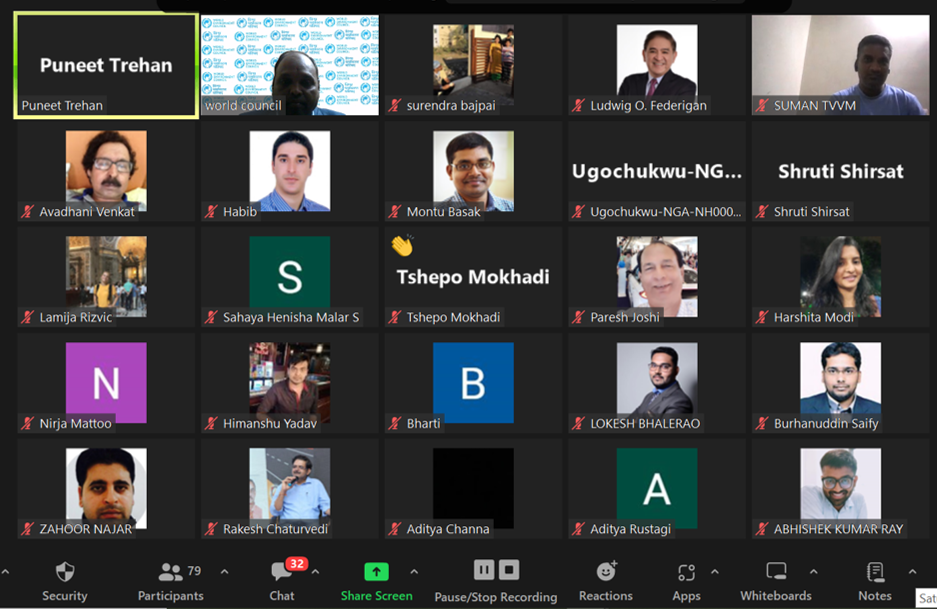New Delhi (August 24, 2024) — The World Environment Council successfully hosted its highly anticipated Online ESG Conference on “The Future of ESG: Trends and Innovations,” bringing together global experts, industry leaders, and students to explore the evolving landscape of Environmental, Social, and Governance (ESG) practices. The event took place on August 24, 2024, from 7:00 PM to 9:00 PM IST and was attended by participants from various corners of the world.


The conference was opened by Shri. Prof. Ganesh Channa, Founder and President of the World Environment Council, who delivered the opening remarks, warmly welcoming attendees and setting the tone for the insightful discussions that followed. Mr. Puneet Trehan, Sr. Manager of ESG & Sustainability, served as the host for the event, ensuring a smooth flow of the proceedings.


The keynote address sessions featured distinguished speakers who shared their expertise on various aspects of ESG:
- Ludwig Oscuro Federigan, EMDRCM, CBP delivered a compelling keynote on “The Evolution of ESG: Past, Present, and Future,” highlighting the transformative journey of ESG practices.
- Dr. Sukh Dev Singh, IFS presented on “Environmental Initiatives for the Sustainability of ESG,” emphasizing the critical role of environmental stewardship in sustainable ESG frameworks.
- Ms. Puneeta Puri, Executive Director of the Indian ESG Network, provided an in-depth analysis of the “ESG Landscape in India,” shedding light on the unique challenges and opportunities within the country.
- Mr. Avadhani Venkat, Partner at Sustina Eco Advisors, spoke on “Human Behavior and Net Zero Goals,” exploring the behavioral shifts required to achieve ambitious environmental targets.
- Mr. Mukesh Malik, CEO of ProjectGK, concluded the series with a thought-provoking address on “The ESG Relationship with Information Technology,” exploring the intersection of technology and sustainability.
The event concluded with a heartfelt note of thanks from the World Environment Council, expressing gratitude to all the speakers, the host, and the global audience, including ESG experts and students, for their active participation and engagement. The Council emphasized the importance of staying informed and connected in the rapidly evolving field of ESG, as it continues to play a crucial role in shaping sustainable business practices worldwide.


This conference marks another significant milestone for the World Environment Council in its mission to promote sustainability and responsible governance across the globe.












